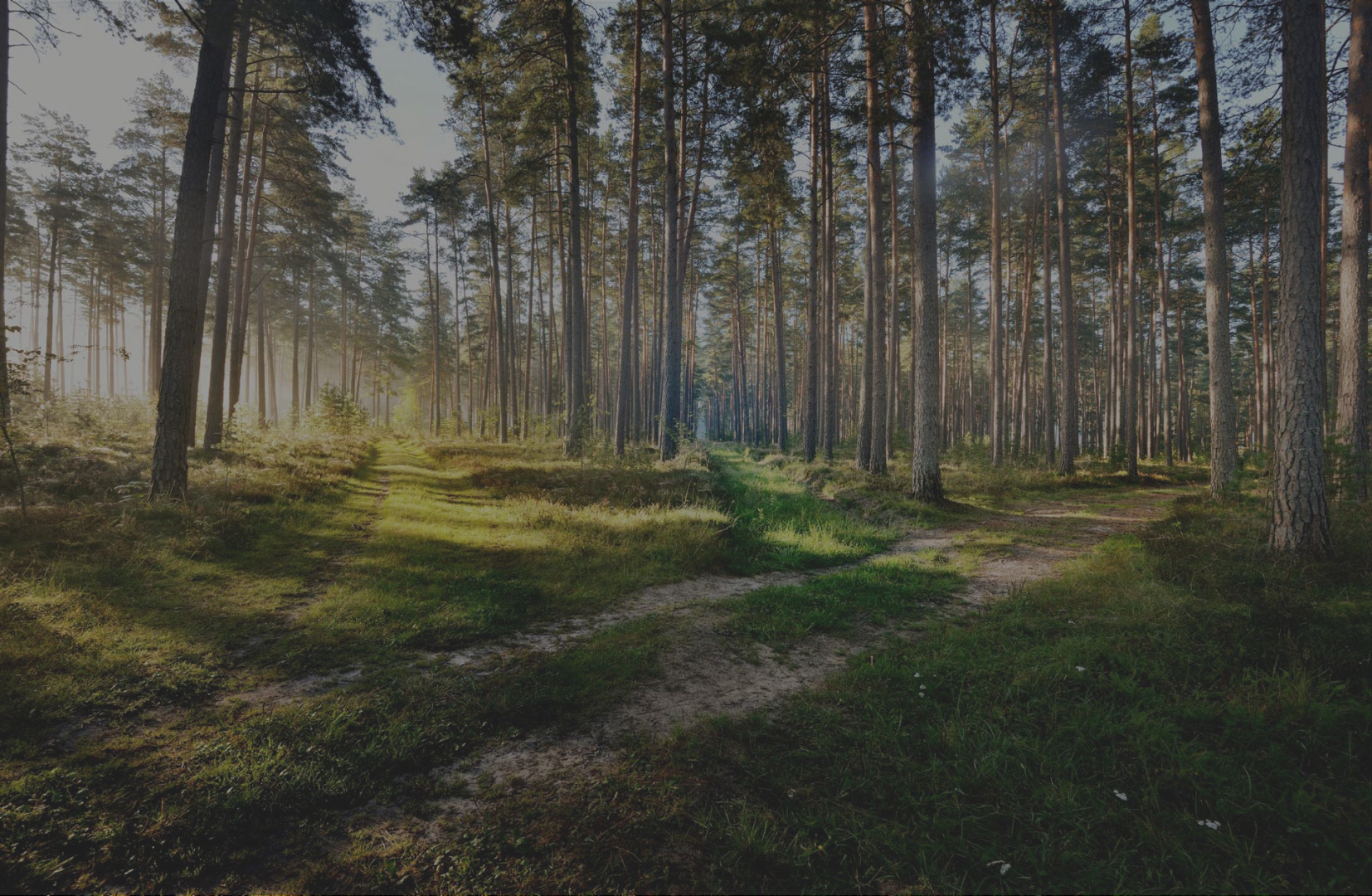OFFICIAL NAME: Republic of Latvia
AREA: 64,589 km2
POPULATION: 1,953,200
OFFICIAL LANGUAGE: Latvian
CAPITAL: Riga
POPULATION OF THE CAPITAL: 641,423
Latvia, officially the Republic of Latvia, is a state in northern Europe, on the east coast of the Baltic Sea. It is one of the three Baltic States and is a member of the European Union. The capital of the country is Riga. In the north, Latvia shares a border with Estonia, in the east – with Russia, in the southeast – with Belarus, and in the south – with Lithuania. The west coast is bordered by the Baltic Sea, and the north coast by the Gulf of Riga. The area of Latvia is 64 589 km2, the population on January 1, 2016 was 2 144 763. About 60% of the population are ethnic Latvians, and ethnic Russians are the largest minority. Latvian is the official state language.
Latvia is situated in the temperate zone, and its climate is affected by the proximity of the sea and by Atlantic air masses, resulting in a gentle and humid climate in Latvia, with four distinct seasons. As the territory of Latvia extends to the north-east, the climate in the western and eastern regions is slightly different. On average, 160-180 days a year are cloudy. The average rainfall varies from 574 to 691 mm per year. The lowest temperature in the territory of Latvia was registered on February 8, 1956, when the air temperature dropped to -43.2 ° C. The highest air temperature was recorded on August 4, 2014, when it reached the level of +37.8 ° C. The average temperature in January, the coldest winter month, fluctuates around -3 ° C near the coast and around -7 ° C in the eastern part of Latvia, while the average air temperature in July, the hottest summer month, is approximately +16 ° C in the coastal area +17.5 ° C in the eastern part of the country.
According to the Latvian Forest Statistical Inventory (Cycle 2, 2009-2013), 55% of the territory of Latvia is occupied by forest lands, including 52% forests, 2% bogs and 1% other forest land. The territory of Latvia is relatively level, the highest elevation is Gaizinkalns in the Vidzeme highlands, with an absolute altitude of 311.94 meters above sea level.
CONTACT
Mr Arvids Ozols
Director of Forest Department
Ministry of Agriculture of the Republic of Latvia

LATVIAN FORESTRY AND FORESTS
Forests in Latvia take up 3.383 million hectares of land, or 52% of the country’s territory. The forest area has doubled compared to 1923, when the forested areas comprised 23% of the territory of Latvia. The amount of forestland, moreover, is constantly expanding, both naturally and due to afforestation of infertile land and other land that is not used for agriculture. More important, however, is another indicator – the volume of timber in the forest is increasing three times more than the area of forestland. This proves that the forest area in Latvia is not expanding because of bushes that are not counted as part of the area of forest. On the contrary, forestry work in Latvia has been very targeted. An average of approximately 12 million m³ of round wood has been harvested each year in Latvian forests during the past decade. That is less than the annual increment, and so forestry in Latvia can be described as sustainable.
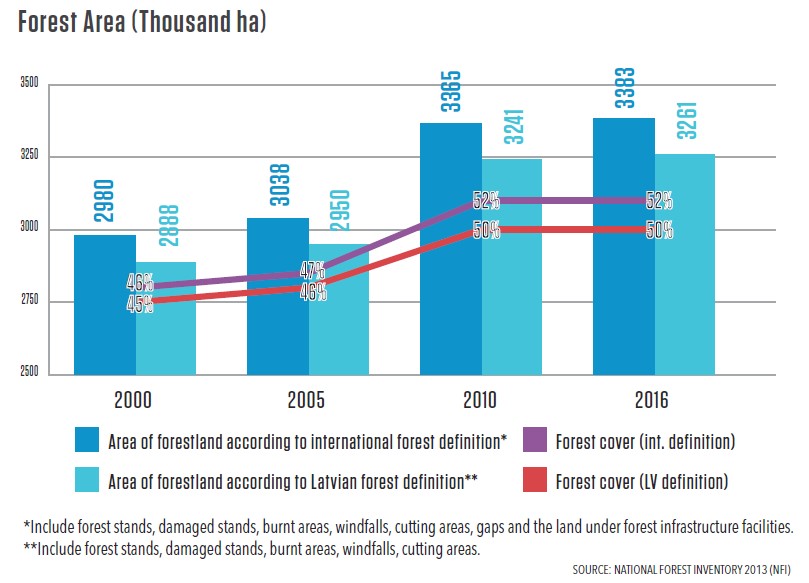
Fig. 6. Changes in forest cover at the last 16 years in Latvia
The total stock of growing trees in Latvia has steadily increased, and in 2016 it reached 667 million cubic meters. This increase in standing volume was historically promoted by the hydro-technical melioration of forests, which was carried out in the 1970s and 1980s.
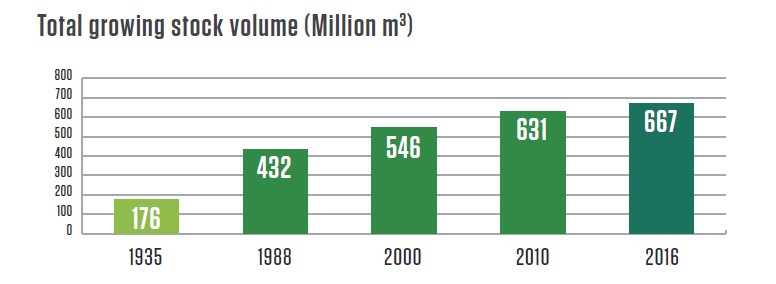
Fig. 7. The increase of growing stock in Latvia’s forests
Latvian forest classification was established in the 1980s and is still currently utilised. There are no two completely identical forest stands in nature, and the task of forest classification is to group forest sites with similar soil fertility, humidity conditions, and distinctive tree and ground cover species. The classification of Latvian forests by definition of forest-growing conditions, forest types and forest stand types assists planning and forest management.
Latvian forest classification starts with assessment of forest growing conditions or environmental conditions. The main environmental factor that affects Latvian forests is water. Forests whose growth is not restricted by water are called dry forests and occupy 49% of Latvian forests. In at least half of Latvian forests, water influences the tree root system, reducing growth. About 28% of Latvian forests grow in over moist mineral soils, while 23% of Latvian forests are found on over moist peat soils. The excavation of ditches in over moist forests increases soil aeration, and improves growing conditions for trees – forests have been established on meliorated mineral soils (19%) and peat soils (14%). Forests with a similar structure at maturity and similar forest regeneration after tree felling or natural mortality are grouped into forest types. 23 forest types have been defined in Latvia and are used in forestry management. Each of the 23 forest types has a Latvian name, and for international communication and statistics, Latin names are used, describing the indicative forest vegetation species.
Table 1.
Growing conditions and forest types in Latvia
| Forest growing conditions | Forest type (latin name) | Area, % of forests in Latvia | Area, % of forests in Latvia |
| Dry soil forests | Cladinoso- callunosa | 49 | 0,8 |
| Vacciniosa | 3,1 | ||
| Myrtillosa | 3,3 | ||
| Hylocomiosa | 17,4 | ||
| Oxalidosa | 21,8 | ||
| Aegopodiosa | 2,9 | ||
| Wet mineral soil forests | Callunosa-sphagnosa | 10 | 0,1 |
| Vaccinioso-sphagnosa | 1,7 | ||
| Myrtilloso-sphagnosa | 4,1 | ||
| Myrtilloso-polytrichosa | 3,3 | ||
| Dryopteriosa | 0,4 | ||
| Wet peat soil forests | Sphagnosa | 10 | 2,7 |
| Caricoso – sphagnosa | 3,0 | ||
| Dryopterioso-caricosa | 3,6 | ||
| Filipendulosa | 0,2 | ||
| Drained mineral soil forests | Callunosa mel. | 18 | 0,1 |
| Vacciniosa mel. | 1,4 | ||
| Myrtillosa mel. | 12,0 | ||
| Mercurialiosa mel. | 4,8 | ||
| Drained mineral soil forests | Callunosa turf.mel. | 13 | 0,6 |
| Vacciniosa turf.mel. | 2,2 | ||
| Myrtillosa turf.mel. | 7,6 | ||
| Oxalidosa turf.mel. | 2,7 |
Fig. 8. Typical landscape of Latvian pine forest in Cladinoso- callunosa forest type
Tree species composition
Only local tree species grow in Latvian forests. Introduced tree species are found in separate stands as historical objects. In the western part of Latvia, the largest area of introduced species (about 20 hectares) is occupied by European beech, introduced at the end of the 19th century and which is now also successfully regenerating naturally.
Coniferous forests dominate in Latvia. Historically, the largest forest area was occupied by pine forests, however presently, the area of pine forests has decreased. For many years (in the 1970s and 80s), the regeneration of pine forests was limited by the excessive number of moose, which resulted in an increase of the use of spruce for forest regeneration. After restoration of independence, and reestablishment of private forest ownership, the proportion of broad leaf tree species increased due to the practice by forest owners of allowing natural regeneration of harvested forest areas by broad leaf tree species. At present, the number of ungulates has increased and the reforestation of pine forests is affected by both biotic risks and economic considerations.
Table 2
Total area of dominant tree species in Latvia, thousands ha
| Dominant tree species | Totally in Latvia’s forests | State owned forests | Private forests | |
| Th.ha | % | Th.ha | Th.ha | |
| Scots pine (Pinus sylvestris | 869,42 | 27 | 602,78 | 266,64 |
| Norway spruce Picea abies | 571,98 | 18 | 366,46 | 205,51 |
| Birch Betula sp. | 893,67 | 28 | 314,01 | 579,66 |
| Black alder Alnus glutinosa | 181,24 | 6 | 80,86 | 100,37 |
| Grey alder Alnus incanaa | 308,95 | 10 | 22,96 | 285,99 |
| Aspen Populus tremula | 256,98 | 8 | 91,46 | 165,52 |
| Oak, ash Quercus robur, Fraxinus excelsior | 37,65 | 10,50 | 27,15 | |
| Other species | 62,96 | 10,59 | 52,36 | |
Forest age structure is important for forest management in Latvia. Ideally, the distribution of forest areas by age decades should be similar. There are many old pine forests in Latvia, while young forests contain a higher proportion of spruce, which is connected with the historical practice of planting spruce instead of pine. Latvia has a very large number of young birch stands up to 20 years of age, while the proportion of intermediate age birch stands is lower.
Forest stands in Latvia can be divided into natural and man-made stands, according to origin. As a result of natural regeneration, broad leaf species – aspen and alder coppices, as well as birch forests – are the most frequent in Latvia. Historically, coniferous forests are human-made. In 2016, 38.6 thousand ha of forests were regenerated in Latvia, of which 16.0 thousand were in state forests, and 22.6 thousand ha were in private forests. Forest regeneration volumes are optimal and stable, as they are equivalent to the annually harvested area. In 2016, 12.6 thousand ha of forest was sown or planted (32% of the total area of reforestation); 8.2 thousand ha (51%) in state forests, and 4.4 thousand ha in private forests, which is 19% of the total forest area renewed in 2016 in private forests.
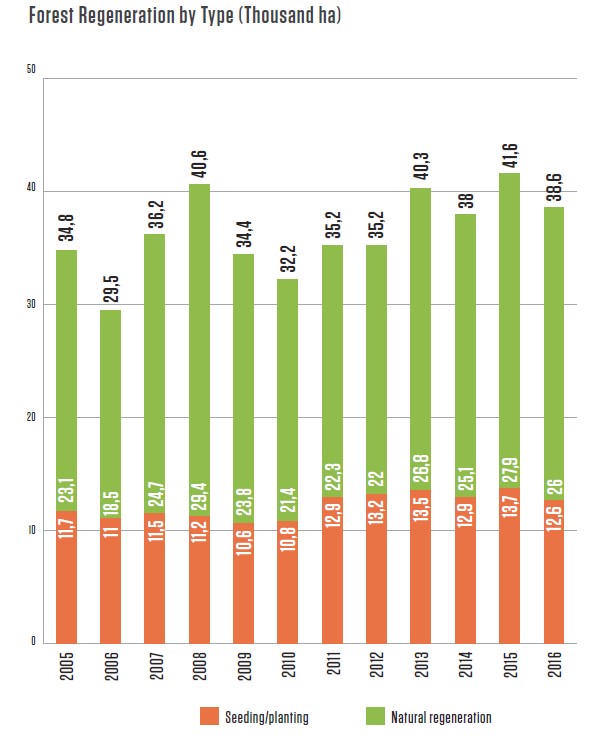
Fig. 10. Forest regeneration in Latvia
In the future, a significant increase in the standing stock per hectare is expected due to intensive management of young stands. In Latvia, it has been determined that the number of trees in juvenile stands should not exceed 2000 trees per ha. This results in more intensive tree growth and the accumulation of wood. In 2016, pre-commercial thinning was done in 68.6 thousand ha of young stands in Latvia, including 35.9 thousand ha in state forests, and 32.7 thousand ha in private forests. The most commonly thinned stands were birch (33%), spruce (28%) and pine (21%), other tree species stands comprise 18%. For many years, the establishment of dense young stands was practiced in Latvia, resulting in spindly intermediate aged trees, and fragile and unsustainable stands.
Forest stock volume, increment and logging
In Latvian forestry, a long growing cycle is utilised for forest cultivation. The final product of forest cultivation is the sawlog. In accordance with Latvian legislation, each tree species has a specified harvest age – the age in years when the main cut and reforestation of forest stands can be done. The harvest age of the main tree species in Latvia are shown in Table 3.
Table 3.
Harvesting age (rotation period) in Latvia’s forests, years
| Species | Years |
| Scots pine (Pinus sylvestris | 100 |
| Norway spruce Picea abies | 80 |
| Birch Betula sp. | 70 |
| Black alder Alnus glutinosa | 70 |
| Grey alder Alnus incanaa | not determined |
| Aspen Populus tremula | 40 |
Each tree species also has a specified target diameter – the average diameter of the tree at 1.3 m height above the root collar, which should be reached to allow the final cut. If the target diameter is reached, the forest stand is allowed to be harvested at a younger age than the specified harvest age. On average, the diameter of the main cut in Latvia is 30 cm. This regulation motivates forest owners to choose an intensive forestry approach, in order to harvest trees prior to the specified cutting age.
Latvian forestry utilises the small clearcut system. The average area of clearcuts is 2 ha. After the clearcut, the new stand is established within 3 years. Harvest volumes in private forests are determined by the owner of the forest in accordance with the legal requirements regarding the age or diameter of the final cut. The maximum permissible harvesting volume in state forests in Latvia is determined by the government. This amount is determined with great caution in order to prevent any risks to the availability of forest resources. The criteria for determining the harvest volumes are based on efforts to maintain an even age structure of forests in the long term and to ensure a steady supply of timber to industry. The concept of capital management of forests in Latvia is under development.
According to the data of the National Forest Inventory of Latvia, mature forests occupy an area of 830 thousand hectares with 224 million cubic meters of wood. Over the past 5 years, the area of mature forests has increased by 63 thousand hectares, while the amount of timber has increased by 21 million cubic meters.
The annual calculated increment in standing wood volumes in Latvia in 2016 was 26.9 million cubic meters per year and this has not significantly changed over the previous 10 years. Natural tree mortality in Latvia accounts for an average of 6.2 million cubic meters per year, which has fallen by 0.7 million cubic meters over the previous 5 years. The greatest damages to Latvian forests are caused by wind (68% of natural mortality). The other causes of tree mortality are mainly due to damage by insects and diseases (root rot).
Felling operations
The main source of timber in Latvia is via the final cut, which is most often implemented as a small clearcut. Timber harvested in the main cut accounts for 40.4% of the total amount of timber from an area of 41169.08 ha. An additional 32.8% of timber resources are obtained from intermediate felling or thinning. 22.3% of timber resources are obtained from sanitary felling of disease, pest, wind and snow-damaged stands. 4.5% of the wood is obtained from other activities, mainly from maintenance of forest infrastructure. The amount of illegally cut timber in Latvia is estimated to be 0.04% of the total amount of harvested timber.
In historical terms, the intensive use of Latvia’s forests for economic purposes began comparatively later than in many other European countries, and that has allowed us to preserve extensive biological diversity. Limitations on economic activity apply to 13,2% of Latvia’s forests at this time, and most of this territory is owned by the state. 683 especially protected environmental territories have been set aside to protect nature. Many are included in the unified and pan-European NATURA 2000 network of protected territories.
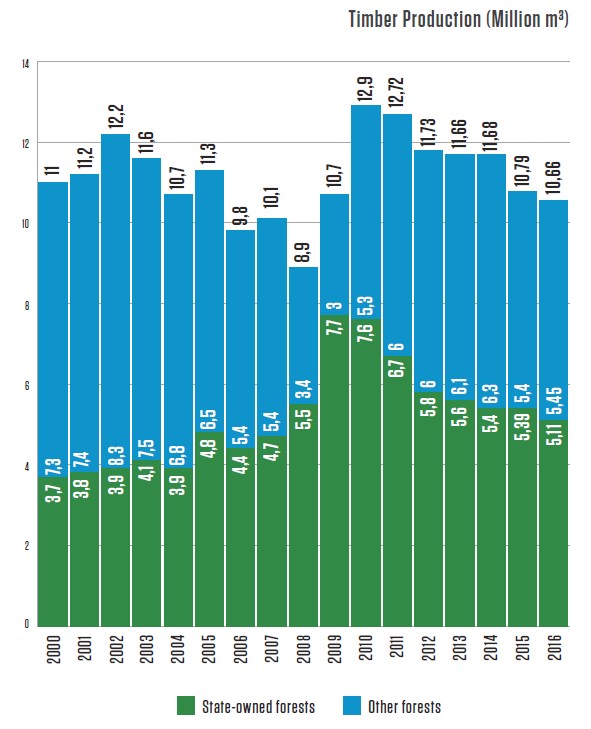
Fig. 16. Timber production from Latvia’s forests since 2000
No increase of harvest volumes in state-owned forests in Latvia is predicted while there is not a political decision to change from the traditional planning approach to a capital management approach to forestry. Harvest volumes in private forests are determined by the price of timber, which in Latvia depends on global processes. At present, wood prices are low, influenced by the contraction of the timber market in the UK, as well as the unstable political situation in the Middle East.
ECONOMIC ASPECTS OF FORESTS
The forest sector in Latvia is under the supervision of the Ministry of Agriculture. It works with stakeholders to draft forest policies, development strategies for the sector, as well as regulations on forest management, the use of forest resources, environment protection and hunting (www.zm.gov.lv).
The State Forest Service, under the Ministry of Agriculture, is the responsible agency for supervising how the provisions of the laws and regulations are observed in forest management irrespective of the ownership type (www.vmd.gov.lv).
State-owned forests are managed by Stock Company “Latvian State Forests”, which was established in 1999. It implements the state’s interests in terms of preserving and increasing the value of the forest and enhancing the contributions of the forest to the national economy (www.lvm.lv).
Associations of companies in Latvia’s forest industries joined together in the Latvian Forest Industry Federation in 2000. It works to develop Latvia’s forest sector together with other stakeholders so as to establish a sustainable and stable economic environment that will develop the relevant companies, enhance their competitiveness, ensure the international representation of the industry’s interests, and help to develop and co-ordinate the work of the member associations.
Forest employment
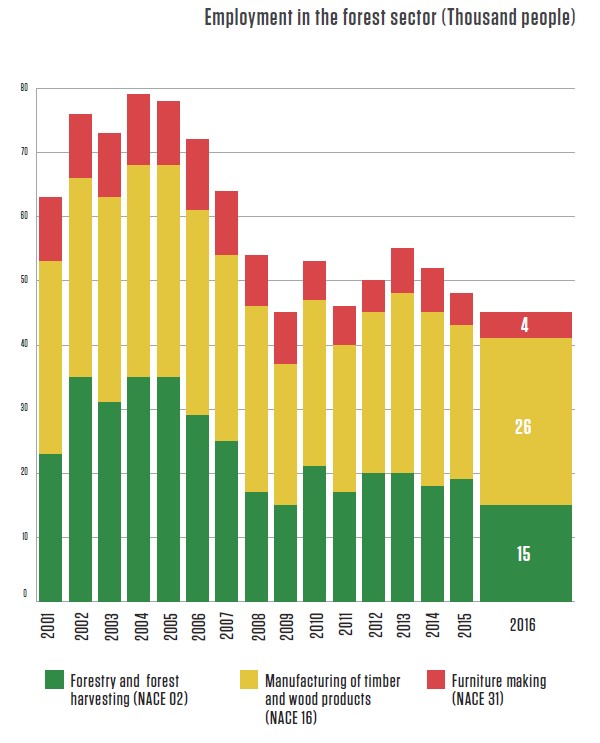
Fig. 17. Employment in the forest sector (thousand people)
Forest ownership
Forest ownership structure in Latvia was developed after regeneration on independence at 1990. The private rights were restricted after this event. The forests belonging to state at 1940 were survived as state owned.
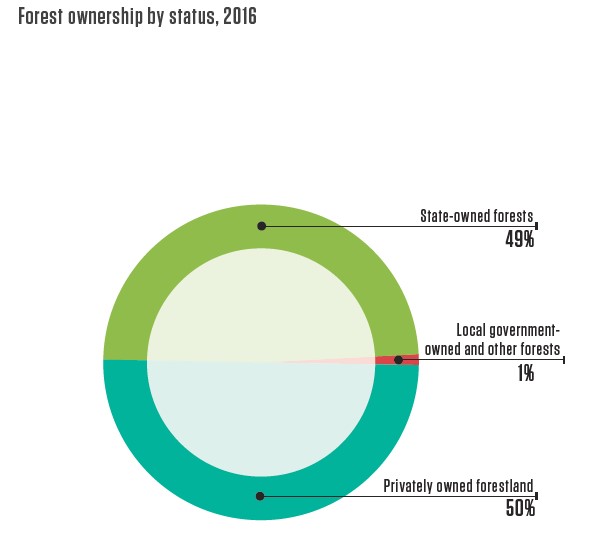
Fig, 18. Forest ownership in Latvia
The structure of private ownerships shows a number of small (less than 5 ha) properties. At the last years, intensive process of forest ownership consolidation is started as result of land market. The ways to stimulate and support forest owner’s cooperation are developed in forestry sector.
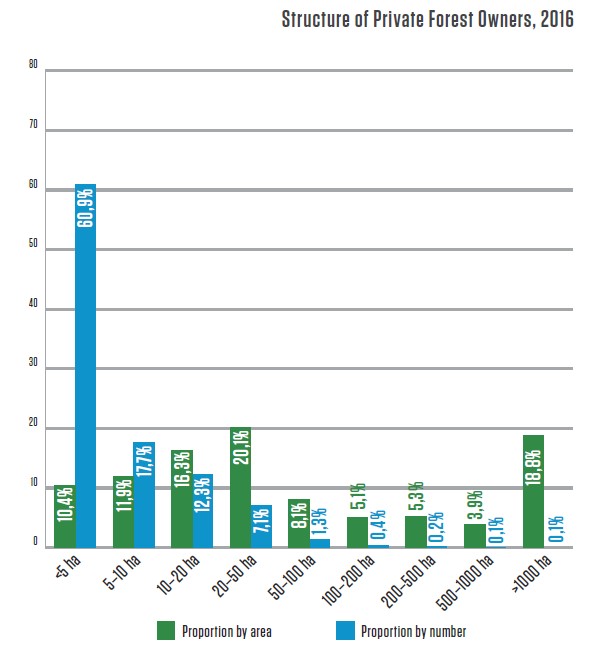
Fig. 19. The private forest ownership structure in Latvia
Economic importance of forest sector in Latvia
The forest sector is one of the cornerstones of the national economy at this time. Forestry, wood processing and furniture manufacturing represented 5,2% of GDP in 2016, while exports amounted to EUR 2 billion – 20% of all exports. There is no parish in Latvia with no larger or smaller wood processing company. Often these are the most important employers in the surrounding area, thus being the main pillar of support for local economies and residents.
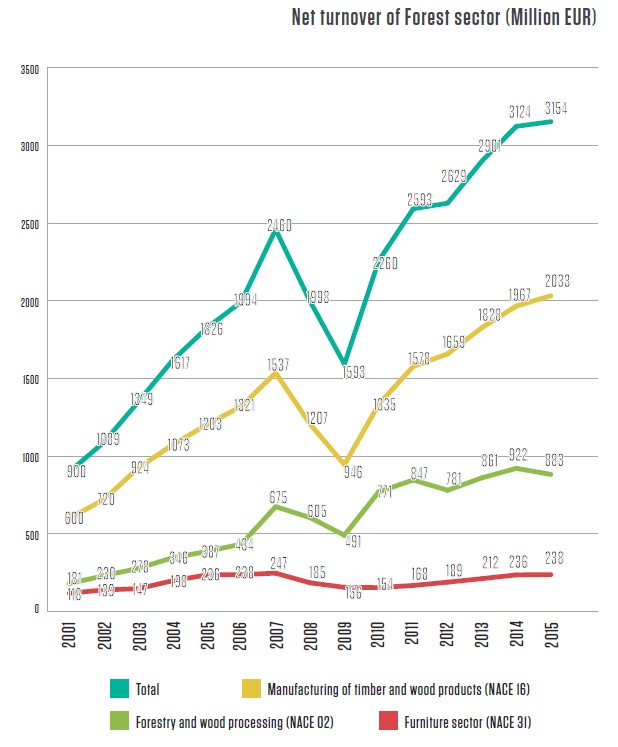
Fig. 20. Increase of net turnover of forestry sector in Latvia since 2001
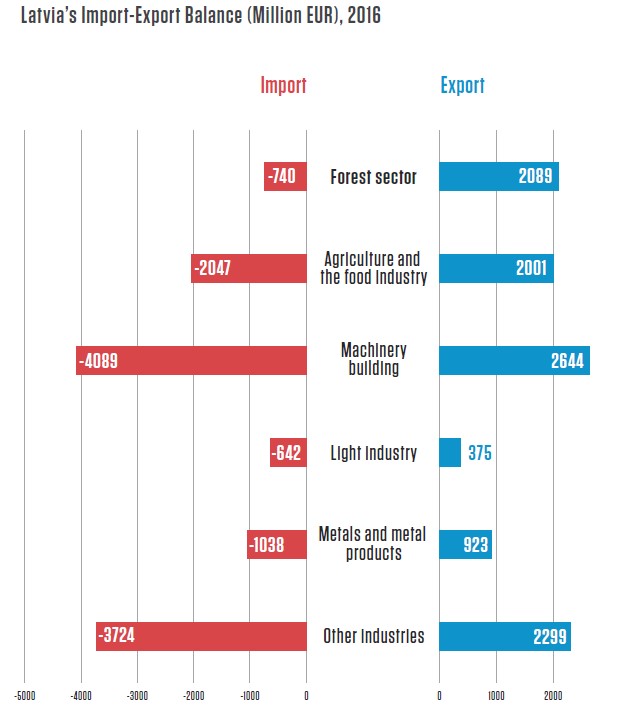
Fig. 21. Latvia’s import export balance (million EUR) at 2016
Latvian Institutions associated with forestry
Governmental organizations
The forest sector in Latvia is under the supervision of the Ministry of Agriculture. It works with stakeholders to draft forest policies, development strategies for the sector, as well as regulations on forest management, the use of forest resources, environment protection and hunting (www.zm.gov.lv).
The State Forest Service, under the Ministry of Agriculture, is the responsible agency for supervising how the provisions of the laws and regulations are observed in forest management irrespective of the ownership type (www.vmd.gov.lv).
State-owned forests are managed by Stock Company “Latvian State Forests”, which was established in 1999. It implements the state’s interests in terms of preserving and increasing the value of the forest and enhancing the contributions of the forest to the national economy (www.lvm.lv).
Non-governmental organizations
Latvian timber industry associations:
Association “Latvijas Mēbeles” (Latvian Furniture)
Latvian Timber Producers’ & Traders’ Association
Latvian association of wood processing companies and exporters
Association “Latvijas Koks”
Latvian Union of timber harvesting companies
Latvian association of independent timber harvesting companies
Latvian biomass association LATbio
Latvian Wood Construction Cluster
Associations of companies in Latvia’s forest industries joined together in the Latvian Forest Industry Federation in 2000. It works to develop Latvia’s forest sector together with other stakeholders so as to establish a sustainable and stable economic environment that will develop the relevant companies, enhance their competitiveness, ensure the international representation of the industry’s interests, and help to develop and co-ordinate the work of the member associations.
Forest science and education in Latvia
Education in the area of the forest sector can be obtained at 17 professional educational institutions, the Forest Faculty of the Latvian Agricultural University (LLU), and the Textile Technology and Design Institute of the Rīga Technical University’s Faculty of Material Sciences and Applied Chemistry. The Latvian Chamber of Craftsmanship has offered informal wood processing training sessions taught by experienced craftspeople. Graduates from such programmes receive a craftsman’s card or a diploma as an apprentice or master craftsman.
Education in the area of the forest sector can be obtained at 17 professional educational institutions, the Forest Faculty of the Latvian Agricultural University (LLU), and the Textile Technology and Design Institute of the Rīga Technical University’s Faculty of Material Sciences and Applied Chemistry. The Latvian Chamber of Craftsmanship has offered informal wood processing training sessions taught by experienced craftspeople. Graduates from such programmes receive a craftsman’s card or a diploma as an apprentice or master craftsman.
The total number of students in Forest faculty: 597 (06.09.2017.) 109 new forest sector specialists graduated from the LLU Forest Faculty in 2017: in Bachelor’s degree programs: 15 at Forestry Science, 42 at Forest Engineering, 15 at Wood Processing, 19 at Labour Safety. In Master’s degree programs: 5 at Forest Ecology and Silviculture 5 at Forest Economics and Policy, 7 at Forest Works and Machinery, 1 at Wood Materials and Technologies.
There are 4 institutions involved in science supporting forestry and wood industry in Latvia.
Latvian forest science center is Latvian State Forest Research Institute “Silava”. The principal goal of LSFRI Silava: getting new knowledge, based on scientific methods, and developing the innovative technologies to promote the sustainable development and competitiveness of forest sector.
LFRI Silava works the basis of science-based forestry. The main topics in commercial forestry research area are:
- improvement of the commercial value of forest stands: tree growth rate, mature tree quality, technical (mechanical) properties, biotic risk mitigation;
- tree and forest survey (evaluation) methods, more accurate tree trunk and other biomass calculation algorithms, more accurate CO2 sequestration and GHG emission algorithms, more effective forest and forest resource assessment by remote sensing methods;
- interaction of forestry and other forest ecosystem services (environmental impact of forestry, interaction of forest recreational functions and forestry, interaction of artificial biodiversity and forestry.
Besides commercial forestry support, LFRI develops knowledge in fields of wildlife management and hunting, forest machinery development and agroforestry systems.
Some fields of activity are carried out in Faculty of Forest: research of forest ecology and forestry; influence of forest work and machinery on the ecosystem of the forest, assessment of the derived products, and quantitative and qualitative indicators of measurement; forest resource economy and forest management planning, research of wood materials and technologies (www.mf.llu.lv)
The field of activity of Latvian State Institute of wood chemistry is the development of scientifically grounded, environmentally friendly, wasteless technologies for obtaining of competitive materials and products from wood and wood biomass (www.kki.lv).
Forest and Wood Products Research and Development Institute is competence centre for wood material research, products testing and training within forest based sector in Latvia. Working area involves applied research and technology issues of wood and wood based products, forestry logistics, testing required for product conformity attestation according to European and other relevant standards, development of new products and innovation, development and implementation of further training activities, promotion of professional education development. Accredited tests offered by testing laboratory covers determination of physical and mechanical properties of the wood and wood based products, construction material reaction to fire tests required for European classification, furniture strength and durability tests, surface finishing quality tests, solid biofuel tests (www.e-koks.lv).
The Forest research station, which is an agency founded by LFRI Silava and Latvia University of Agriculture, conducts scholarly research in the area of forest management, ensuring long-term and uninterrupted research in this area (www.agenturamps.lv).
Stay informed
Get the latest news and information about CEEC to China –forestry mechanism.

